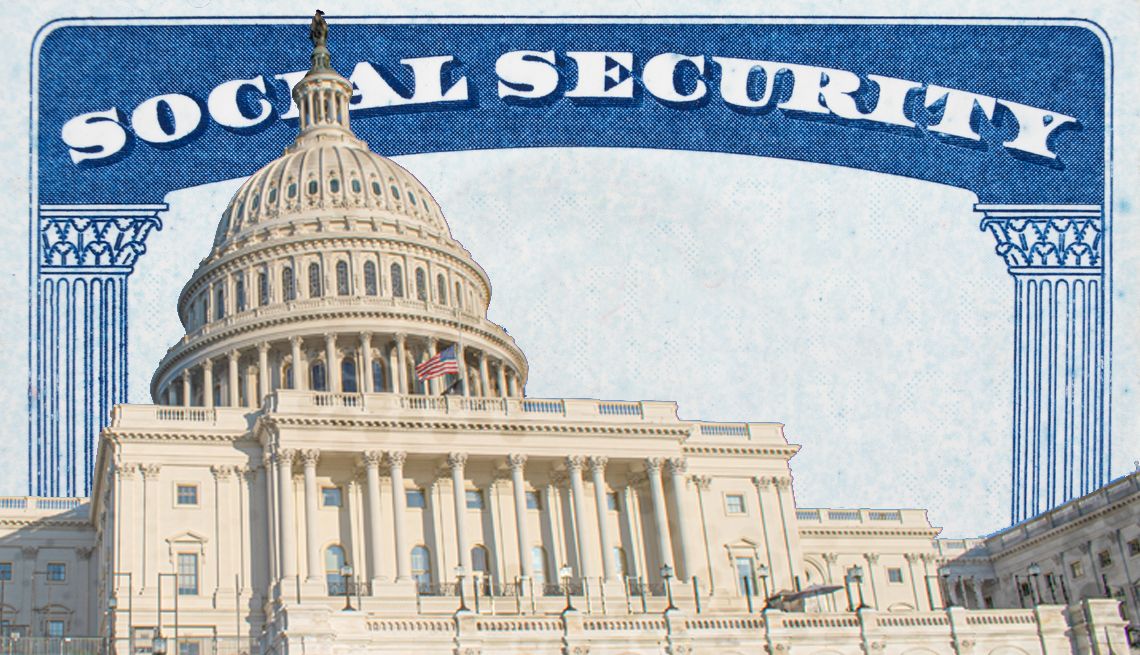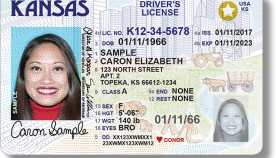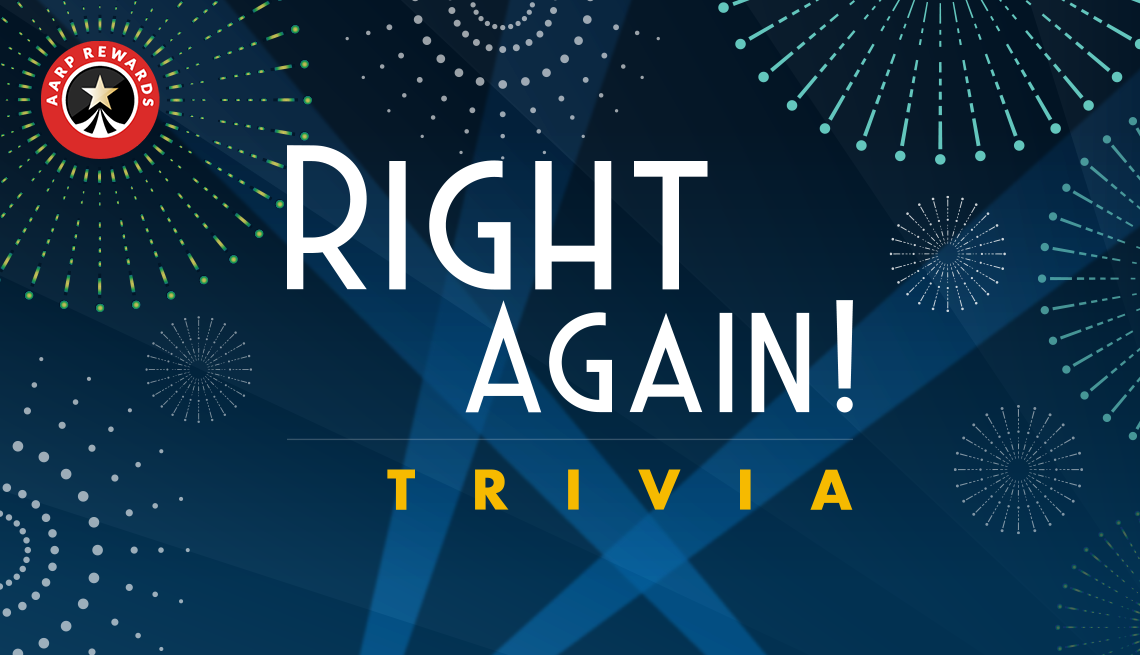AARP Eye Center
- AARP Online Community
- Games
- Games Talk
- SongTheme
- Games Tips
- Leave a Game Tip
- Ask for a Game Tip
- AARP Rewards
- AARP Rewards Connect
- Earn Activities
- Redemption
- AARP Rewards Tips
- Ask for a Rewards Tip
- Leave a Rewards Tip
- Help
- Membership
- Benefits & Discounts
- General Help
- Caregiving
- Caregiving
- Grief & Loss
- Caregiving Tips
- Ask for a Caregiving Tip
- Leave a Caregiving Tip
- Entertainment Forums
- Rock N' Roll
- Leisure & Lifestyle
- Health Forums
- Brain Health
- Healthy Living
- Medicare & Insurance
- Health Tips
- Ask for a Health Tip
- Leave a Health Tip
- Home & Family Forums
- Friends & Family
- Introduce Yourself
- Our Front Porch
- Money Forums
- Budget & Savings
- Scams & Fraud
- Retirement Forum
- Retirement
- Social Security
- Technology Forums
- Computer Questions & Tips
- Travel Forums
- Destinations
- Work & Jobs
- Work & Jobs
- AARP Online Community
- Retirement Forum
- Social Security
- Re: Which IRMAA premium table for measuring MAGI
Which IRMAA premium table for measuring MAGI
- Subscribe to RSS Feed
- Mark Topic as New
- Mark Topic as Read
- Float this Topic for Current User
- Bookmark
- Subscribe
- Printer Friendly Page
- Mark as New
- Bookmark
- Subscribe
- Mute
- Subscribe to RSS Feed
- Permalink
- Report
Which IRMAA premium table for measuring MAGI
I retired in 2019, my wife in 2017. 2020 was the first year in which my retirement had a significant impact on our MAGI, yet we paid IRMAA surcharges. We finally heard back from the SSA regarding our appeals; they will not refund the surcharges we paid for 2020. (We did win our appeals for 2021.)
SSA measured our 2020 MAGI against the "Medicare Part B And Part D Prescription Drug Coverage For Year 2020 IRMAA Tables" for Married filing jointly. The table in this document states "If MAGI in 2018 (or 2017 if 2018 is not available) was …". This is the typical situation where the two-year look-back determines whether surcharges should be paid in 2020. So normally, MAGI for a specific tax year is measured against IRMAA premium year tables designed for that tax year.
In our case, had SSA used the "Medicare Part B And Part D Prescription Drug Coverage For Year 2022 IRMAA Tables" where the table states "If MAGI in 2020 (or 2019 if 2020 is not available) was …", we would not owe the surcharges. We believe this is the table SSA should have used since it would match our 2020 MAGI with the correct tax year. (Remember, this is within our 2019 Life-Changing Event two-year timeframe: 2020 and 2021.)
As shown above, MAGI from an earlier tax year can be measured against IRMAA premium year tables for later years. But we've found no case where MAGI from a later tax year is measured against IRMAA premium year tables for earlier tax years. We believe our local SSA office made a mistake in our case.
Which IRMAA premium table should the SSA use? We have the option of moving this up the appeals ladder.
Thanks,
Brian
- Mark as New
- Bookmark
- Subscribe
- Mute
- Subscribe to RSS Feed
- Permalink
- Report
@Tonster521 and @GailL1,
My reason for posting on this forum is that I wasn't able to find clear authority for the proposition that the IRMAA premium table used by the SSA in its determination must be a table designed for use with the MAGI's tax year. Again, our 2020 MAGI is above the 2018 IRMAA premium table threshold of $174K and below the 2020 IRMAA premium table threshold of $182K. We did not make our MAGI under consideration in 2018 or 2019. We made it in 2020. So, we either owe IRMAA for 2020 or we don't.
You have both provided a lot of good information here and I thank you. As a resource, I'm sure it will help many people in the future. But the answer to our problem is not here. In fact, I think this particular scenario was never thought of in the design phase and thus the algorithm to capture it never implemented. Yet, I wouldn't characterize it as an edge case; I believe a lot of people have been unwarily impacted.
Finally, the closest I've come to an answer is the HI 01120.005 Life Changing Events example where the tax year and premium year are the same year. We’ll include it as part of our appeal.
Thanks,
Brian
- Mark as New
- Bookmark
- Subscribe
- Mute
- Subscribe to RSS Feed
- Permalink
- Report
@BrianB705050 As I understand the info that has been posted in this thread, you have already won your appeal. The SSA is using your 2020 MAGI for the required 2020 Medicare contributions (including IRMAA, if any). Although you have not provided your 2018 MAGI, I am assuming your 2020 MAGI is less than 2018. It appears to me that you believe the income tiers that appear in the IRMAA Table are related to 2018 and not 2020. I previously provided a link to the CMS letter from November 2019 indicated the 2020 income tiers. For most folks (i.e., maybe 40 to 50 million), MAGI from 2018 is used to identify which income tier is applicable for their 2020 Medicare contributions (including IRMAA, if any). For your refernce, I will try to copy and paste the CMS letter from November 2017 which indicates the income tiers for 2018 and the corresponding Medicare contributions (including IRMAA, if any). Remember, for 2018, the IRMAA formula uses MAGI from 2016 ( except for the exceptions).https://www.cms.gov/newsroom/fact-sheets/2018-medicare-parts-b-premiums-and-deductibles
- Mark as New
- Bookmark
- Subscribe
- Mute
- Subscribe to RSS Feed
- Permalink
- Report
@BrianB705050 Based on my understanding of your posting, it appears that you are questioning the IRMAA for 2020. As Gail pointed out, the IRMAA for 2020 is based on your MAGI from 2018. You were still working in 2018 or maybe converted a Traditional IRA/401 K to a Roth, or received a limp sum payment increasing your MAGI over $174 K which is the threshold for IRMAA in 2020. I believe the IRMAA thresholds are indexed for inflation. So, subsequent years (after 2018) will have higher MAGI thresholds. The $182 K amount (MAGI threshold) that you referenced for 2020 is used for determining your IRMAA for 2022. I am providing a link to an article that may help clarify the IRMAA calculations. https://www.healthmarkets.com/resources/medicare/what-is-irmaa/
- Mark as New
- Bookmark
- Subscribe
- Mute
- Subscribe to RSS Feed
- Permalink
- Report
@Tonster521
The table in the letter we received from the SSA notifying us that we owe IRMAA for 2020 omits (conveniently) the verbiage that state what tax year the table is for. If you were to look this table up in the Program Operations Manual System (POMS), you would find that it states "If MAGI in 2018 (or 2017 if 2018 is not available) was". I'm sure anyone who has received one of these letters can confirm the omission.
They're measuring our 2020 MAGI against a table built to measure 2018 MAGI.
- Mark as New
- Bookmark
- Subscribe
- Mute
- Subscribe to RSS Feed
- Permalink
- Report
@BrianB705050 Your post is confusing. Your IRMAA for 2020 is based on your 2018 MAGI. If your 2018 MAGI is greater than $174 K, you will contribute more toward your Medicare premiums in 2020. It is fairly straightforward. If your MAGI in 2018 is greater than $174 K , you will not receive the 75% subsidy for Medicare benefits in 2020. You will be required to contribute a greater percentage toward Medicare Parts B and D. FYI, your 2020 MAGI is not known until the end of the calendar year or December 31, 2020. Based on the system developed by the IRS and SSA, your information is not exchanged until some point in later 2021. So, 2020 IRMAA are based on your 2018 MAGI, Your 2022 Medicare contributions are based on your 2020 MAGI. There is always a 2 year lag.
- Mark as New
- Bookmark
- Subscribe
- Mute
- Subscribe to RSS Feed
- Permalink
- Report
The second paragraph regards the estimate we gave them that was too low.
In red is the missing MAGI tax year verbiage for the table they used.
Our 2020 MAGI is above the $174,000 IRMAA premium table threshold for MAGI in 2018 and below the $182,000 IRMAA premium table threshold for MAGI in 2020. They are measuring our 2020 MAGI against the IRMAA premium year table used to measure 2018 MAGI.
In the "normal" case, this system works. But it fails in the two-year onboarding phase. Is this a big deal? Yes, when you consider the number of people impacted, past and future.
- Mark as New
- Bookmark
- Subscribe
- Mute
- Subscribe to RSS Feed
- Permalink
- Report
@BrianB705050 Thanks for providing the additional info from the SSA letter. It appears that the SSA is using your 2020 MAGI instead of your 2018 MAGI. This is an exception to the standard 2 year look back which is stipulated in Section 1839 of the Social Security Act. The Act also provides for exceptions to the 2 year look back which is also included in Section 1839. The amounts of IRMAA are established each year by the SS Actuary using a 5 tier table wherein the amounts of IRMAA are developed based on MAGI thresholds that are indexed for inflation year after year. The greater amounts of MAGI, the less Medicare subsidy one receives. FYI, most folks contribute about 25% toward the cost of Medicare Parts B and D. The Federal government (taxpayers) covers the balance of these Medicare welfare benefits. However, if ones MAGI, in a given year, is greater than the established thresholds, one must contribute more money toward the cost of these Medicare welfare benefits (i.e., 35%, 50%, 65%, 80% or 85%). This additional contribution is the IRMAA ; and, in my opinion, fair for the most part. I do not understand why very high income folks still receive a 15% subsidy. So, we have non highly compensated folks subsidizing highly compensated folks. It is a relieve that it is only 15% not 100% as it once was.
In your case, you convinced the SSA to use your 2020 MAGI instead if your 2018 MAGI based on the exception provisions of Section 1839 which I suggest you review. The reading is cumbersome as it is written with quite a few paragraphs and sub sections in a legal format. Take a look at Subsection (4) MAGI and sub paragraphs (B) tax year to be used; and, (C) use of more recent tax year which is your case. https://www.ssa.gov/OP_Home/ssact/title18/1839.htm Hopefully, I copied and pasted Section 1839 correctly. I obtained that link from Gail's posting which I thank her. It would take me more time to find that level of detail. In summary, the SSA allowed you to use 2020 MAGI instead of 2018 MAGI to determine your 2020 Medicare subsidy and IRMAA. However, the MAGI thresholds from 2018 are given and not subject to change (no exceptions). This develops the percentage of Medicare subsidy you are entitled to. The IRMAA for 2020 are given as well with no exceptions.
- Mark as New
- Bookmark
- Subscribe
- Mute
- Subscribe to RSS Feed
- Permalink
- Report
@Tonster521 In our case, the methodology and procedures described in Sec 1839 were applied correctly. The SSA recognized my 2019 Life-Changing Event and changed our MAGI tax year in question to 2020. And I agree that MAGI premium year thresholds do not change once they are published.
Please correct me if I'm wrong. You believe Sec 1839 states that IRMAA premium table thresholds from two years earlier (with some exceptions) are always used to determine IRMAA for the current tax year. Even though the SSA changed the tax year to accommodate our lower MAGI, in this case the tax year is irrelevant; the new MAGI is still measured against the old premium table thresholds despite being the current tax year's MAGI (with its own premium table). Is this correct? Just trying to understand.
- Mark as New
- Bookmark
- Subscribe
- Mute
- Subscribe to RSS Feed
- Permalink
- Report
@BrianB705050 I will try again to copy and paste the link to the CMS article https://www.cms.gov/newsroom/fact-sheets/2020-medicare-parts-b-premiums-and-deductibles Hopefully, it works this time.If not, please type the above in to your search engine.
- Mark as New
- Bookmark
- Subscribe
- Mute
- Subscribe to RSS Feed
- Permalink
- Report
@BrianB705050 Once again, each calendar year the SS Actuary develops the Medicare contributions for six (6) MAGI thresholds (i.e., 25%, 35%, 50%, 65%, 80%, and 85%). For example, because most folks do not exceed the first MAGI threshold, their contribution is 25% of the projected Part B cost. For 2020, the Medicare Part B contribution was $144.60 for those folks. For folks that for 2020 exceed that first threshold ($87K single, $174K married) they will contribute more toward the cost of Medicare Part B. The additional contribution is called Income Related Monthly Adjustment Amount (IRMAA). I will link a letter from CMS describing the IRMAA for 2020.https://www.cms.gov/newsroom/fact-sheets/2020-medicare-parts-b-premiums-and-deductibles.The Medicare Part B contributions and MAGI thresholds are determined or calculated generally by November of the preceding year (i.e., November 2019). The thresholds and contributions are fixed at that time for the following calendar year. The administrative issue or question is "what year will be used to determine MAGI"? Obviously, you will not know 2020 MAGI until the end of 2020. You may know 2019 MAGI after all information is forwarded from the IRS to the SSA which, if lucky, may occur by June 2020. So, the practical approach is to use the available MAGI which is generally two (2) years prior to the year in question. So, for 2020, the SSA will use 2018 MAGI, if available. If not, the SSA will use 2017 MAGI. If there is an exception as stipulated in Section 1839, the SSA will use an appropriate MAGI based on facts and circumstances. In no event does the Medicare Part B contributions or MAGI thresholds change for the calendar in question (i.e., 2020). The only factor that may change is the amount of MAGI that is used to determine if IRMAA is required to be paid for the calendar year in question. For most folks, the two year look back is used. Hope this helps.
- Mark as New
- Bookmark
- Subscribe
- Mute
- Subscribe to RSS Feed
- Permalink
- Report
I am having trouble following you and your question precisely. So maybe just some highlights.
At the end of each fiscal year, the premiums for Medicare Part B (SMI) and Part D (PDP) are established based on the usage. For those people that have higher incomes who have Medicare Part B & Part D, a premiums surcharge is also added based on their income FROM (2) YEARS PREVIOUS. This would be based on the last tax return that should be on file.
This is usually at age 65 although some people keep their [credible] LARGER employer group coverage since they continue to work and thus don’t sign up for Medicare Parts B & D until they lose that [credible] LARGER employer group coverage. “Retirement” actually has nothing to do with the calculation of these surcharges - it is based on the date when the beneficiary signs up for Medicare Part B & Part D.
So if you signed up for Medicare Parts B/D in year 2019, the SSA would have looked at your tax return for tax year 2017 ( which would have been due to the IRS by 04/15/2018).
They are looking at your total tax return and the amount of income reported from whatever source - they are also looking at the total amount of income and if your filing status is MFJ, the total income figure would include income from both spouses even if only (1) of them are then on Medicare Part B/D.
Same thing for Medicare Premiums (including the IRMAA) for the year of 2020 - the amount of your IRMAA surcharges would be based on the tax return from (2) years previous - or TAX YEAR 2018 - the one that would have been due on 04/15/2018 - or an earlier one if the 2018 TY has yet to be filed.
For year 2022 - the Medicare IRMAA premiums would be calculated based on the tax return of TAX YEAR 2020 - which would have been due to the IRA by 04/15/2021.
Yes, there are some life-changing events which they can consider and adjust these surcharge premiums. This is the most current one -
If I haven’t answered your question(s) maybe post again with some details on premium payment dates, Tax years, and income.
Here is the Program Operations Manual System From SSA.gov
HI 01101.020 IRMAA Sliding Scale Tables
- Mark as New
- Bookmark
- Subscribe
- Mute
- Subscribe to RSS Feed
- Permalink
- Report
- Mark as New
- Bookmark
- Subscribe
- Mute
- Subscribe to RSS Feed
- Permalink
- Report
The only thing I can tell you is to check how the MAGi is computed against your tax return for 2020. You & SSA maybe using different modification to get to the MAGi that is being used for this computation of Medicare premium surcharge.
MAGi is modified by different figures for several different types of reviews and taxes or health premium surcharges. For IRMAA computations, take the AGI and add back
1. add back tax-exempt interest
2. For IRMAA purposes, you don’t include the non-taxable portion of social security for IRMAA.
3. add back tax-exempt interest and interest from US savings bonds for higher education
4. foreign-earned income is also added - this is income from wages, not investment income. You can still deduct your Foreign Income Credit from your international investments.
There could be other income modifications that I have forgotten for this specific premium surcharge. Did SSA not tell you what the problem might be with the denial for the 2022 IRMAA premium assessment for which they are using your 2020 TY return?
Would the reason be the same as the 2019 Life-Changing Event appeal which was accepted by SSA?
I am sorry but there is no way that I can answer your question specifically because it is your personal numbers and reasons that make the difference.
- Mark as New
- Bookmark
- Subscribe
- Mute
- Subscribe to RSS Feed
- Permalink
- Report
There has never been a dispute between us and the SSA as to what our 2020 MAGI is.
I never filed an appeal regarding my 2019 Life-Changing Event; it has never been in dispute.
"Did SSA not tell you what the problem might be with the denial for the 2022 IRMAA premium assessment for which they are using your 2020 TY return?"
Sorry, I don't understand your question. This is about being charged IRMAA for 2020.
- Mark as New
- Bookmark
- Subscribe
- Mute
- Subscribe to RSS Feed
- Permalink
- Report
@BrianB705050 wrote
”This is about being charged IRMAA for 2020”.
===================================
For IRMAA premium surcharges for year 2020 - they would have used your 2018 tax year return. The one that was due to the IRS by 04/15/2019.
The rates were slightly lower for IRMAA premiums for 2020 -
The SSA POMS link which I gave previous shows all the rates for 2022/ 2021 / 2020
FOR 2020 the MFJ was this per the SSA POMS page from my previous link (Part B only)
IRMAA Table
MAGI (based on tax return two years prior, or three years if two years prior is unavailable) |
Married filing jointly | |
More than $174,000 but less than or equal to $218,000 | $202.40 |
https://secure.ssa.gov/poms.nsf/lnx/0601101020
So what was your MAGi on the 2018 tax return which the 2020 IRMAA premium surcharge would have normally been assessed using. It would include the MAGi for both you and your wife.
You wrote in an earlier response that “Our MAGI in tax year 2020 was less than $182,000”. But was it less than $174,000 - which was the income rate when assessing the 2020 IRMAA premium surcharge.
"I downloaded AARP Perks to assist in staying connected and never missing out on a discount!" -LeeshaD341679

















)



























































